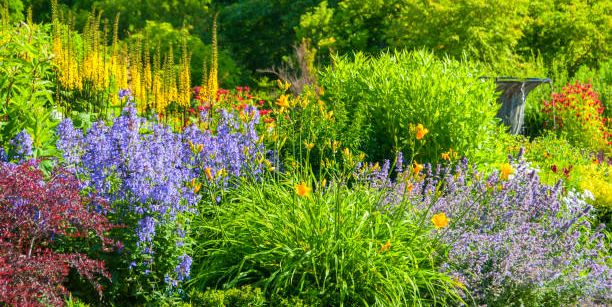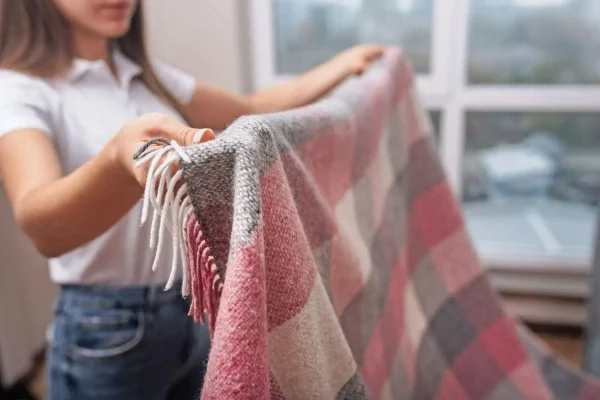If you are in search of the best shade loving perennials, then this post can guide your way. Perennials plants can enhance the beauty of your special landscapes and can be used for multitudinous purposes. Traditionally, these plants have been used in borders, flower beds, cutting gardens, and to highlight special areas in the garden. They are also used to fill the bare corners of the walkways and cover the soil between shrubs and trees. There are multifaceted uses of the shade loving perennials. Here you can find the list, regardless of your specific purpose.
Table of Contents
List Of The Best Shade Perennials For Your Landscapes
The below-given list explains some of the best shade loving perennials you can plant to enhance the beauty of your empty spaces. Check it out:
1: Ligularia
Ligularia, also known as “leopard vine,” is an excellent choice for any shade garden, and not only because deer don’t eat it. Daryl Beyers, is the author of The New Gardener’s Handbook. He says, “One of the other nice things about this plant is its striking, purplish-red leaves.” Another variety has yellow daisy-like flowers, and another has spikier blooms named ‘The Rocket.’ This could be your best bet if you’re looking for a plant with a broad leaf structure.
2: Bleeding Heart
Bleeding heart is an old garden favorite with inch-long, heart-shaped flowers hanging from arching stems. Pink or white blooms are likely. It thrives in deep shade and matches well with other shade-loving perennials in a woodland garden.
3: Aconitum
This ravishing perennial can grow up to three feet tall. What a lovely addition to a shadier part of your lawn! “They also have strong stems,” Beyers adds, “so you may not need to stake them.” The flower itself is, of course, the main attraction. It has a beautiful deep blue or purple hue to it. And deer aren’t fond of them!”
4: Asarum canadense
Canadian wild ginger (Asarum canadense) is a fascinating native plant to include in your shade garden. It’s a low-growing plant that prefers deep shade and damp soil. “It actually does make flowers,” Beyers adds. “They’re just not very showy.”
5: Astilbe
Astilbes are plume-like flowers that bloom for a long time above light foliage. Astilbes are one of the most easy-to-grow perennial flowers. Above fern-like foliage, plumes of violet, lavender, red, white, and salmon flowers grow. Astilbe is one of the most common shade loving perennials, working well in borders or along paths. It’s also lovely in containers.
6: Hosta
These shade perennials are best known for their lovely leaves, but they also bloom in the summer, producing white flower stalks. Hostas are available in a broad variety of shapes, textures, and colors, from cool blue-green to chartreuse. Some types are massive, reaching a diameter of many feet.
7: Hydrangea
This shrub prefers light shade and produces large, round clusters of pink, blue, and white flowers. It’s one of the most common perennials for shade. Blooms may be as big as a dinner plate.
8: Spiderwort
Tradescantia, or spiderwort, is a part-shade plant, not a full-shade plant. It has a lovely flower and can grow to be about a foot and a half and two feet tall. “I suggest trying out the Sweet Kate variety because it has unique, chartreuse-colored leaves,” says Beyers.
9: Lioriope
Lioriope, also known as monkey grass, grows in full sun to moderate shade. It produces violet flower stalks in late summer and grows in 12-18″ tall clumps of strap-like leaves. It works well as a boundary.
10: Christmas Fern
The evergreen leaves of this hardy fern will brighten a winter landscape. It’s suitable for woodland gardens and can be used to avoid erosion on slopes. While it will not spread, the clumps will increase in size.
11: Lenten Rose
Late winter to early spring is when the Lenten rose blooms. This perennial flower, also known as hellebore, is one of the most beautiful shade-loving perennial flowers. It blooms in big, cup-shaped blooms in white, violet, and rose-purple and grows in clumps of dark green leaves.
12: Creeping Jenny
Round, chartreuse leaves on trailing stems light up shady beds while also providing contrast to your other shade perennials. It spreads rapidly and roots as it grows. It will spill out beautifully if planted in containers.
13: Lily of the Valley
The lily of the valley, another shade flowering annual, grows white, bell-shaped flowers with a sweet fragrance. Under trees, Lily of the Valley provides a nice ground cover.
14: Vinca
Smooth leaves and tubular purple flowers make this a common ground cover. It spreads by moving along the ground and bringing down roots. It will hold weeds at bay if you plant it among your perennial shade plants.
15: Viola
Although these spring bloomers tolerate some light, they prefer partial to complete shade, particularly in the summer heat. Some varieties are also fragrant. Penny Purple Picotee and Johnny Jump-Up are two of the varieties available.
16: Solomon’s Seal
A dense blanket of deep-green leaves develops on upright red stems in this perennial. In late spring, pendulous tuber-shaped flowers dangle from the branches, growing into bluish berries in the fall. You can try its Ruby Slippers and Fireworks varieties that are considered to be the most beautiful shade perennials.
17: Caladium
Big heart-shaped leaves in bright colors add a lot of drama to the scene. They’re tropical, so you need to put them in pots in the cold environment and bring them inside for the winter to enjoy as a houseplant. If you are looking for some of the best varieties of the caladium, then Red Flash and White Christmas can be the best bets for you. They are one of the most widely used shade loving perennials.
18: Jack-in-the-Pulpit
Jack-in-the-Pulpit is an intriguing native perennial that blooms in late spring. The hood is the “pulpit” while the flower spike is the “jack.” If you want it on your empty spaces, go with the best ones, which are Crossing Over, and Triphyllum.
Final Words!
If you are a true naturalist and like to decorate your landscapes with a variety of captivating plants and shade loving perennials, then this post has got you covered. You can find more intuitive posts by visiting our blog section. Keep exploring!





